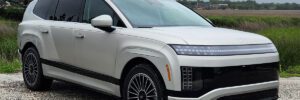
PROS: Capacious; rated range over 300 miles; built in the US; silent, smooth; NACS charging port.
CONS: The most expensive Hyundai; looks are in the eye of the beholder.
The 2026 Hyundai Ioniq 9 is the brand’s largest and priciest electric vehicle. In fact, it’s the priciest Hyundai period, now that Genesis is the Korean company’s high-end luxury brand.
The Ioniq 9 three-row crossover utility vehicle is capacious, quiet and smooth on the road, and up to date in EV state of the art: It’s built in a new US plant, which qualifies it for the full $7,500 purchase incentive (as long as it lasts), and it’s fitted with a NACS port for charging.
Big, square, but still slippery
Three-row crossover SUVs tend to follow one of two patterns: either sleek and rounded (e.g. Lucid Gravity) or rectilinear and upright (e.g. Rivian R1S). The Ioniq 9 falls squarely into the latter camp, but its designers shaped it to have a drag coefficient of just 0.27—and say the upright tail (known as a Kamm back) is actually better for lowering aerodynamic drag.
The front has the new Hyundai signature of a thin, side-to-side light bar, while the “hips” and tapering greenhouse at the rear clearly channel Volvo big SUV, whether you see it as a gasoline XC90 or all-electric EX90.
Inside, the standard Hyundai low, wide dual 12.3-inch displays sit atop a wide, horizontal dash, with the one in the center offering touchscreen controls for driver and front passenger. Hyundai designer Gary Lin noted that the theme for the vehicle was “Aerosthetic Lounge”; we suspect North American buyers will experience it simply as a comfortable and unthreatening interior.
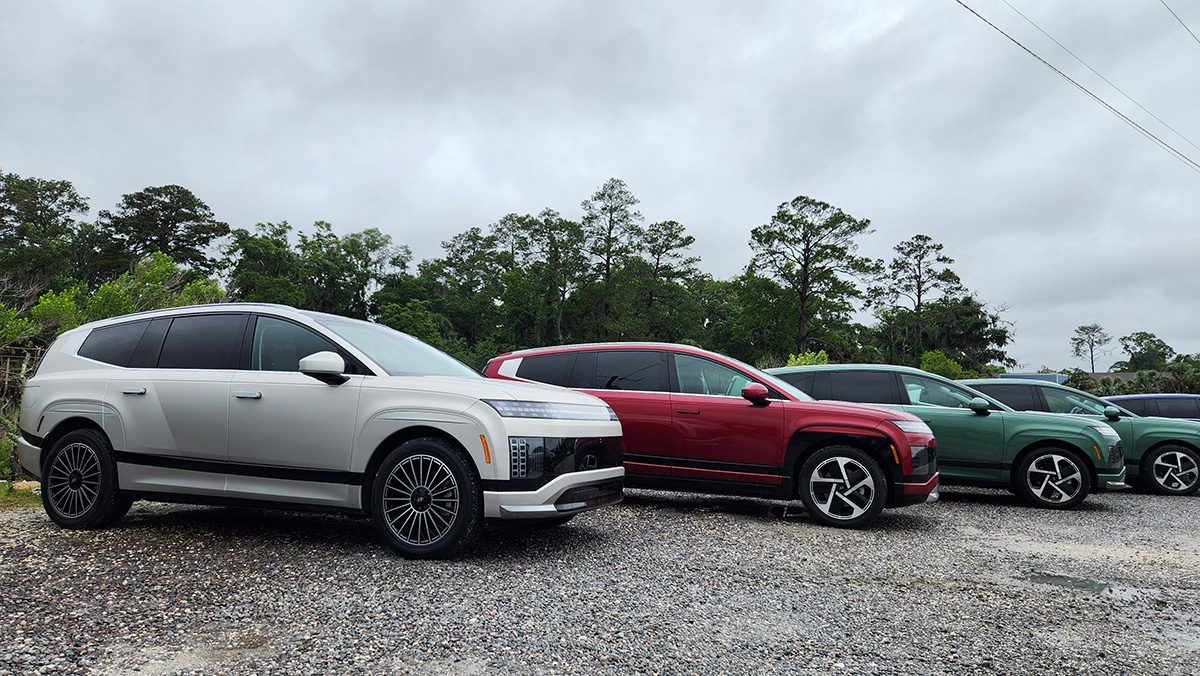
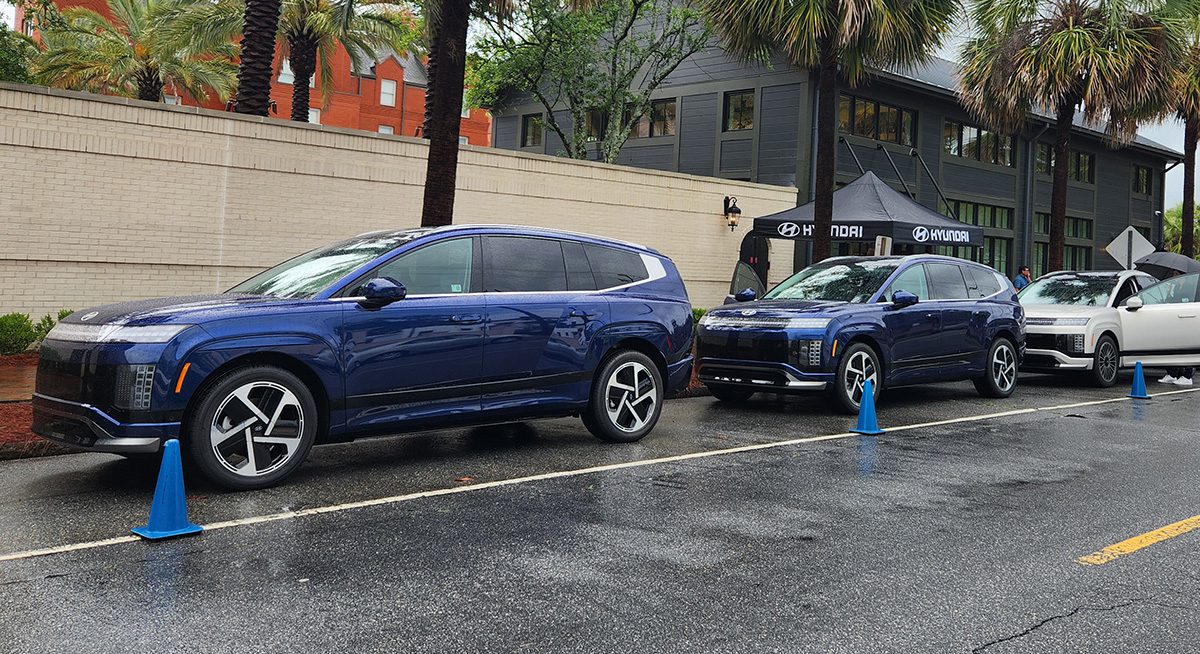
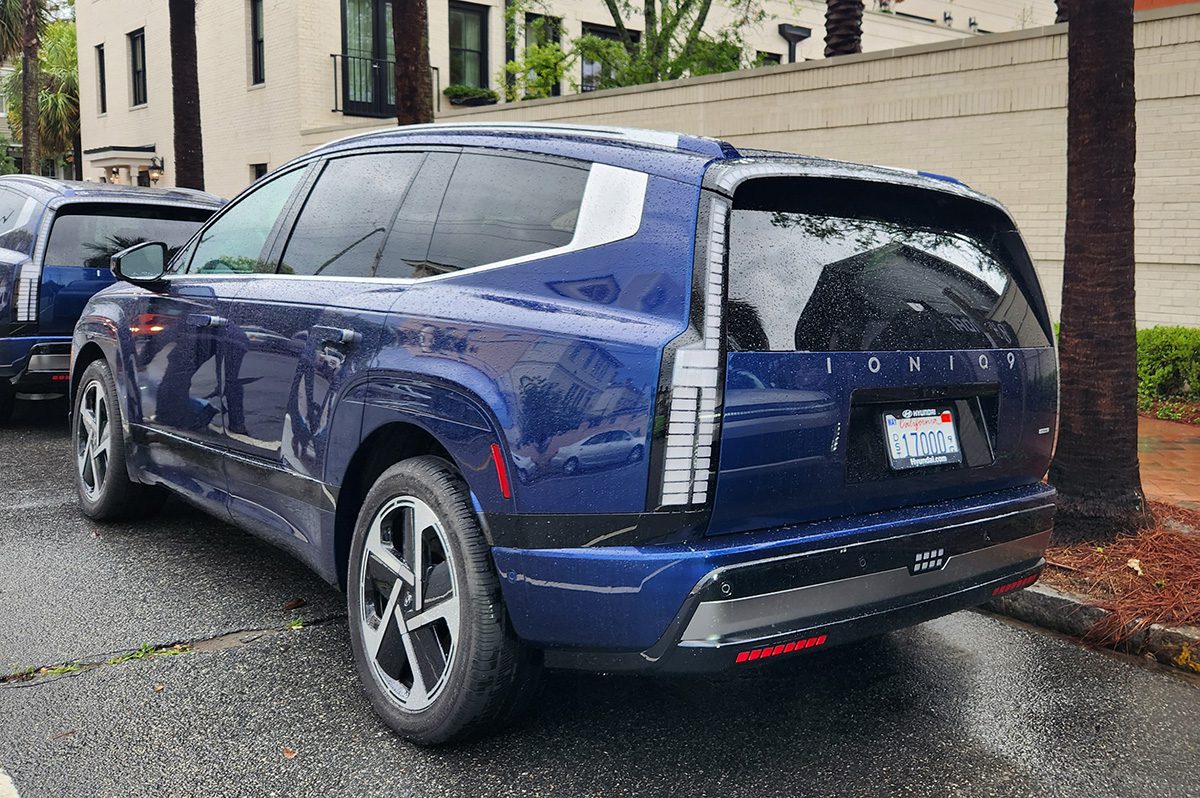
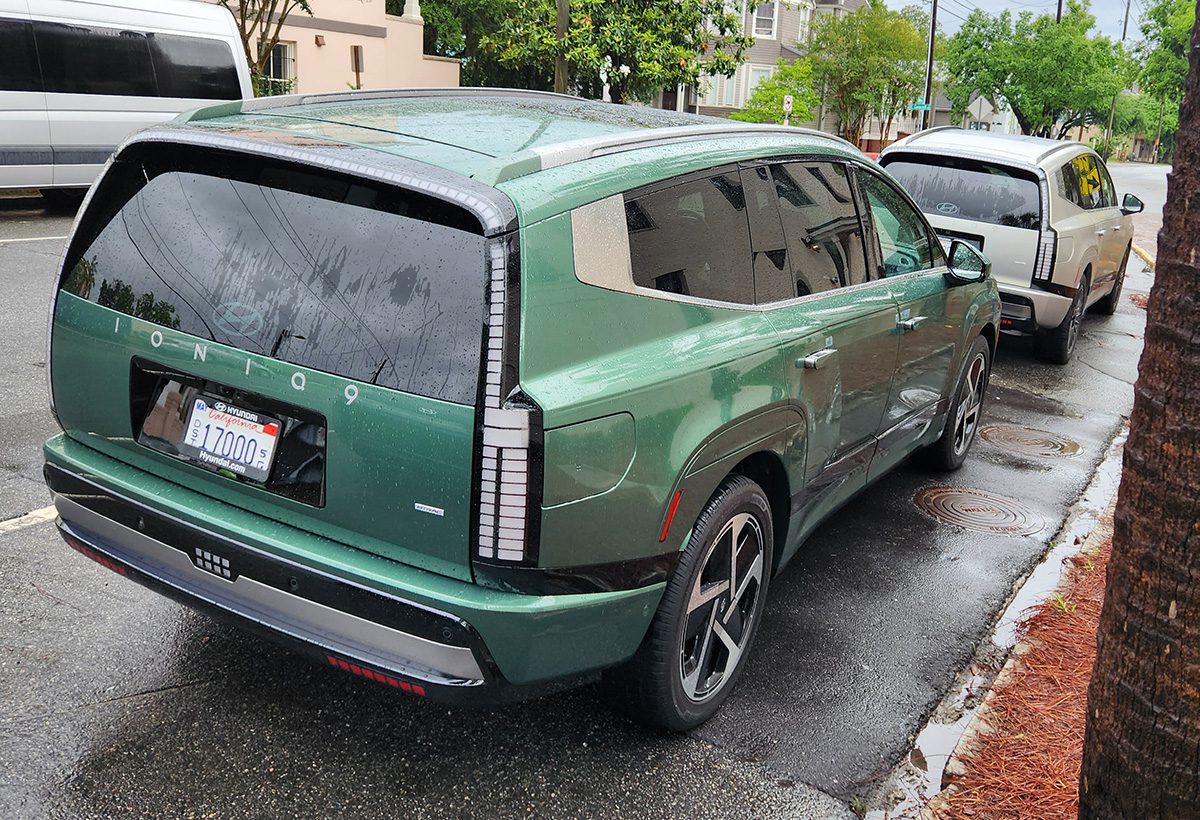
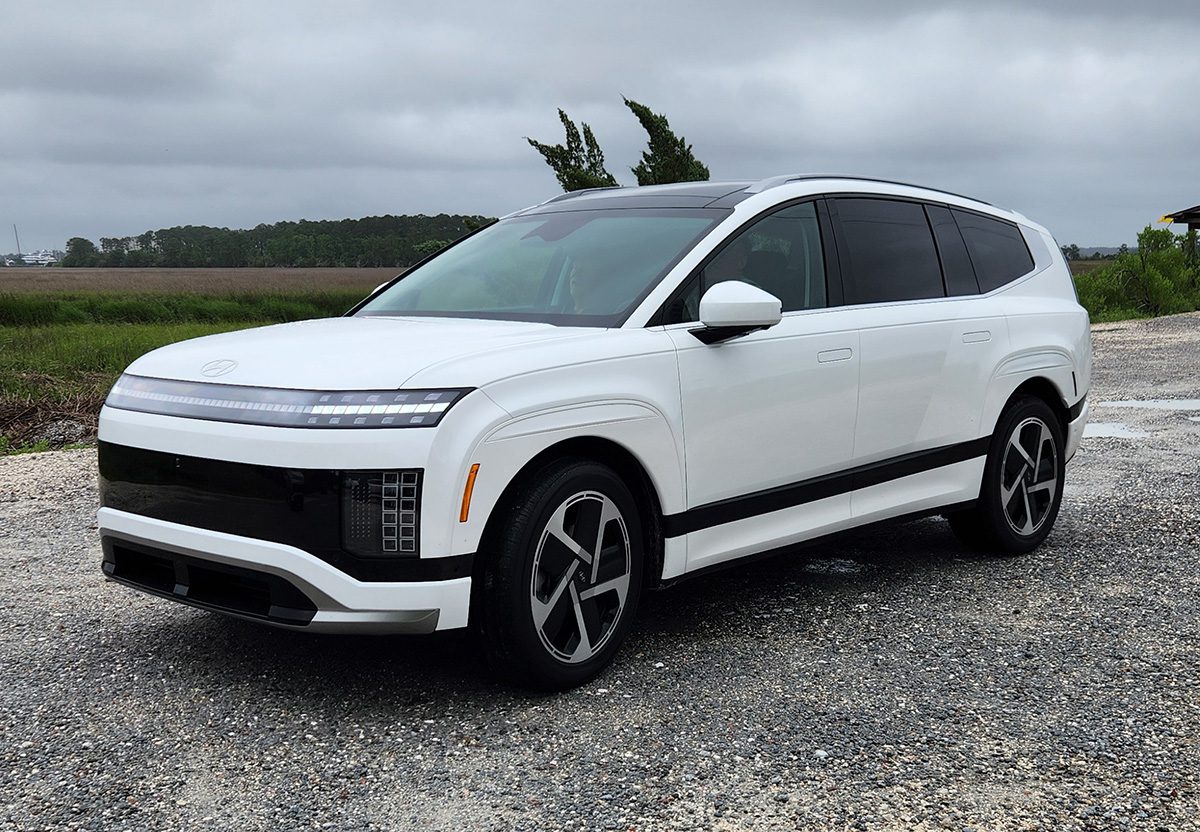
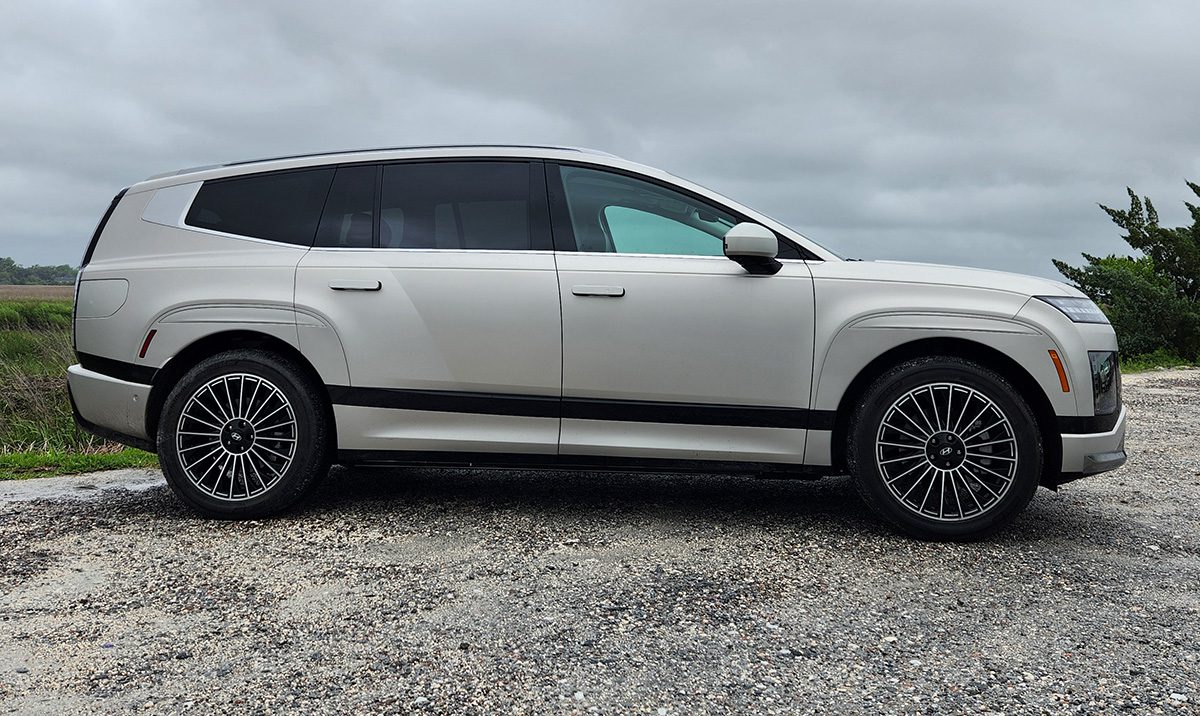
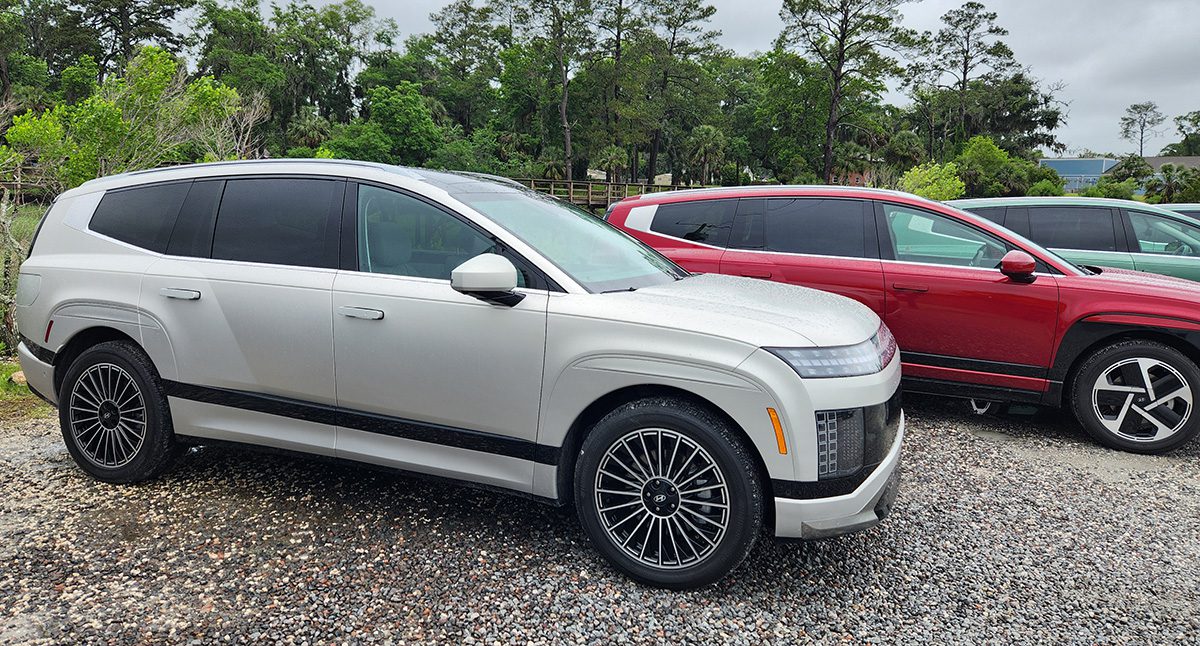
Images by John Voelcker
What they will notice is the interior space, with the Ioniq 9 sitting on a wheelbase of 123.2 inches, or fully 9 inches longer than the Palisade three-row gas crossover the Ioniq 9 matches in size. The rear doors are huge, and two U.S.-sized middle-aged men fit comfortably in the third row, certainly not the case for many gasoline-powered crossovers. In our top-spec version, the third row was reached by pressing a power button on the outer corner of the second-row seat backrests—and then the third row offered a power adjustable backrest, as well as the ability to drop out of sight entirely.
Behind the wheel: powerful, predictable
With a 110.3-kilowatt-hour battery pack powering a rear motor or a pair of motors front and rear, every version of the Ioniq 9 is EPA-rated at more than 300 miles of range. The base rear-wheel-drive “S” version, with a single 160-kilowatt (215-horsepower) motor, carries a 335-mile rating, which falls to 320 miles for the twin-motor version. The SE and SEL models add a front motor rated at 66 kW, for a total power of 303 hp.
The high-end model we drove in early May outside Savannah, Georgia, boosts the front motor power to equal that of the rear: both are rated at 157 kW, for a total power of 422 hp in Limited and Calligraphy models. Tow ratings are 3,500 pounds in RWD form, 5,000 pounds with AWD.
In practice, that all translates to a big SUV that’s more than adequately powerful and drives … well, pretty much the way you’d expect a good electric three-row crossover to drive. The suspension is soft but well damped, the steering puts the car where you expect with a minimum of fuss, and overall, it’s a quiet and comfortable people carrier that makes minimal demands on its driver.
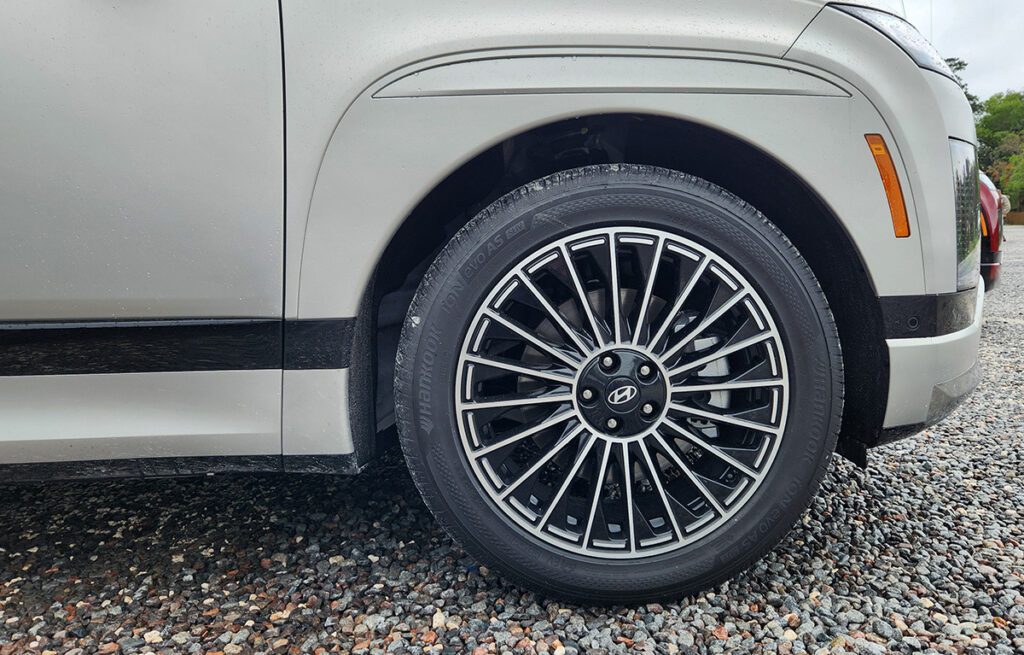
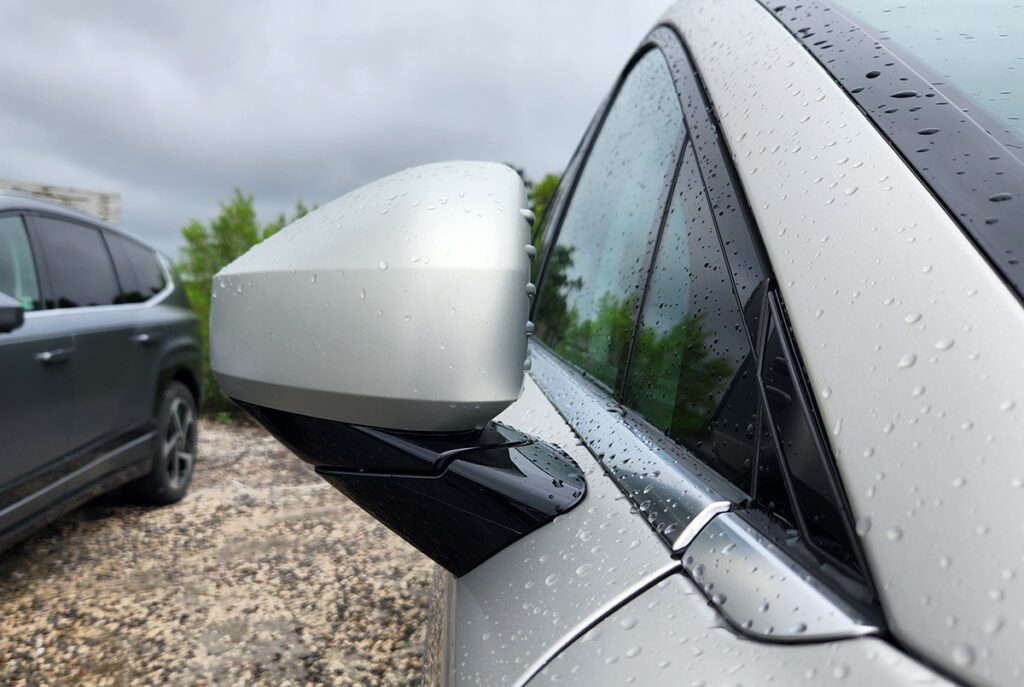
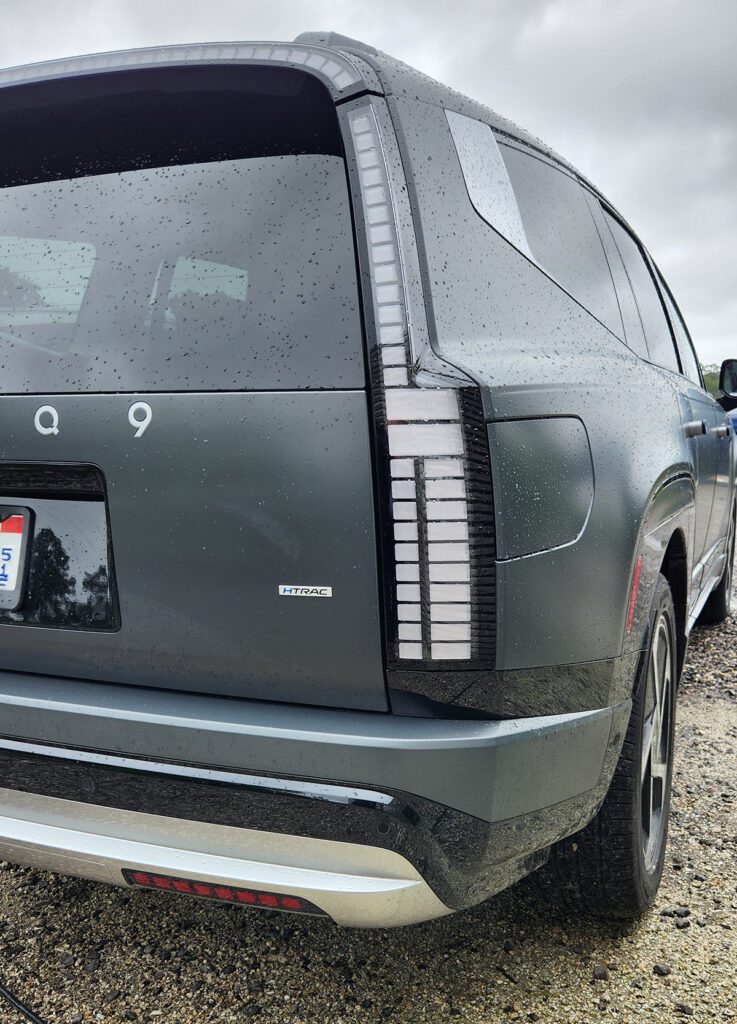

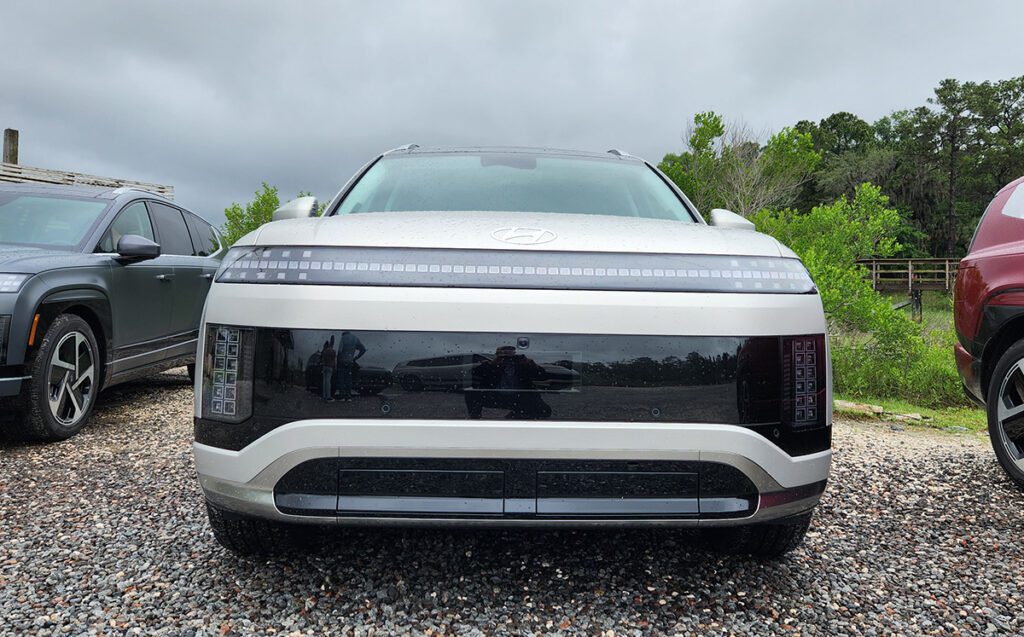
Images by John Voelcker
We tested the Ioniq 9 both with its lowest setting for regenerative braking—it coasts like a car with an automatic transmission—and the i-Pedal one-pedal driving mode. Happily now Hyundai is making that mode persist through multiple power cycles (called “latching”) on its models, whereas it had to be requested every time the driver switched on, or even put the car in a forward gear. As with most such one-pedal systems, once we learned it, we only used the brake pedal in cases of sudden, unexpected stops.
Hyundai is targeting both an IIHS Top Safety Pick+ and a NHTSA Overall 5-Star safety rating. Those crash-test results likely won’t be issued for several months yet.
NACS … with two adapters
It’s worth noting that, like the 2025 Hyundai Ioniq 5 compact built in the same Metaplant in Ellabell, Georgia, the big Ioniq 9 crossover has a standard NACS charging port. Commendably, Hyundai provides the two needed adapters as standard equipment: one for Level 2 AC charging (J-1772 to NACS), the other for DC fast charging (CCS to NACS).
Laudably, Hyundai now offers Plug and Charge capability on “selected” charging networks. Payment is done via Hyundai Pay on the car’s mobile app. Under ideal circumstances, drivers can plug in the car and walk away, with all validation and billing happening on the back end.
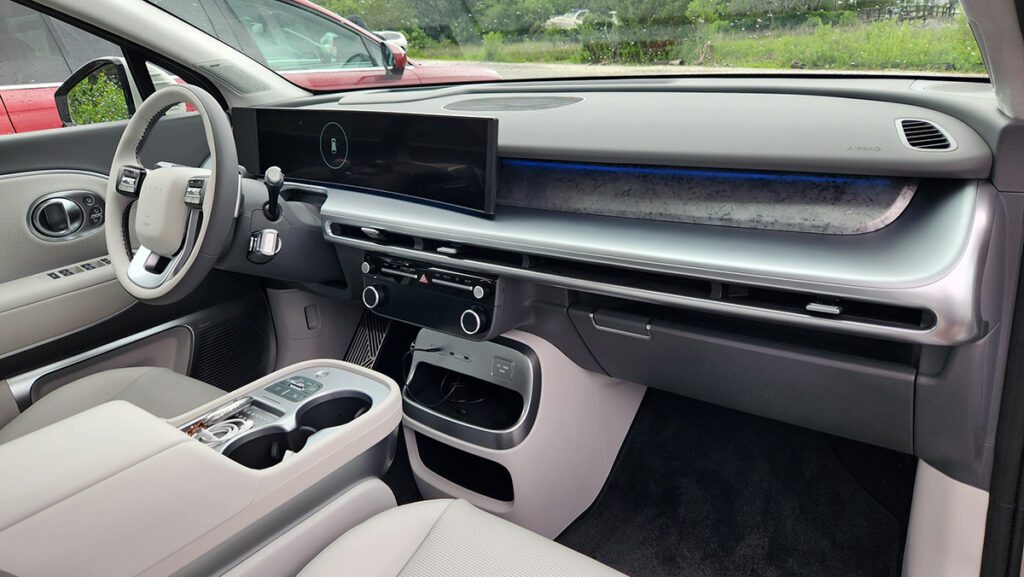
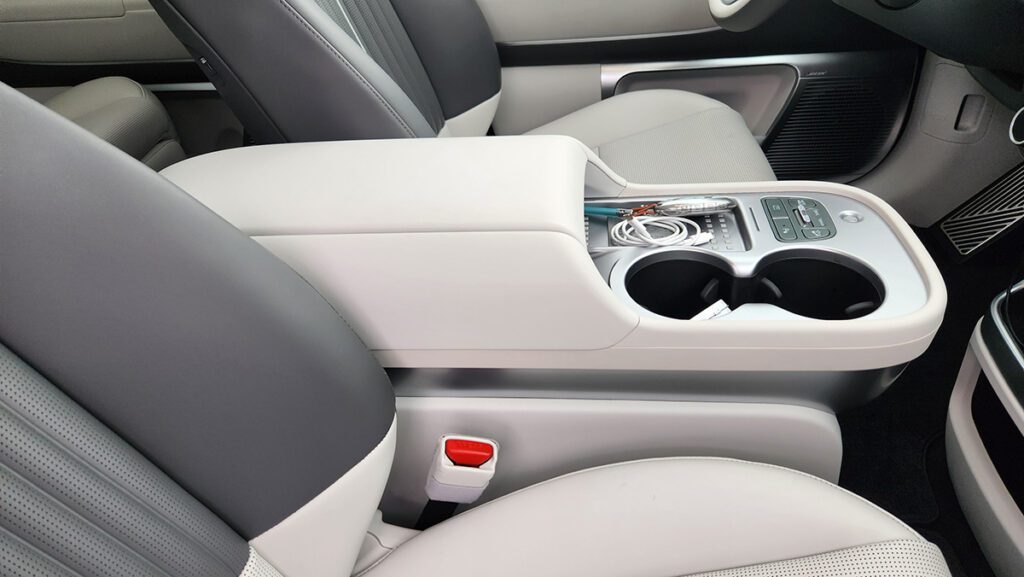
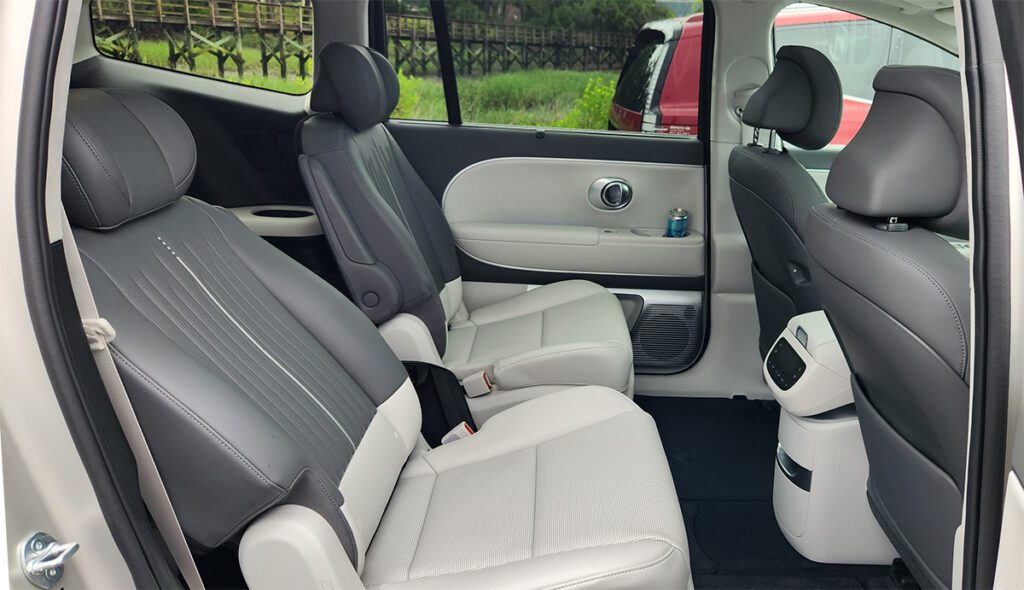
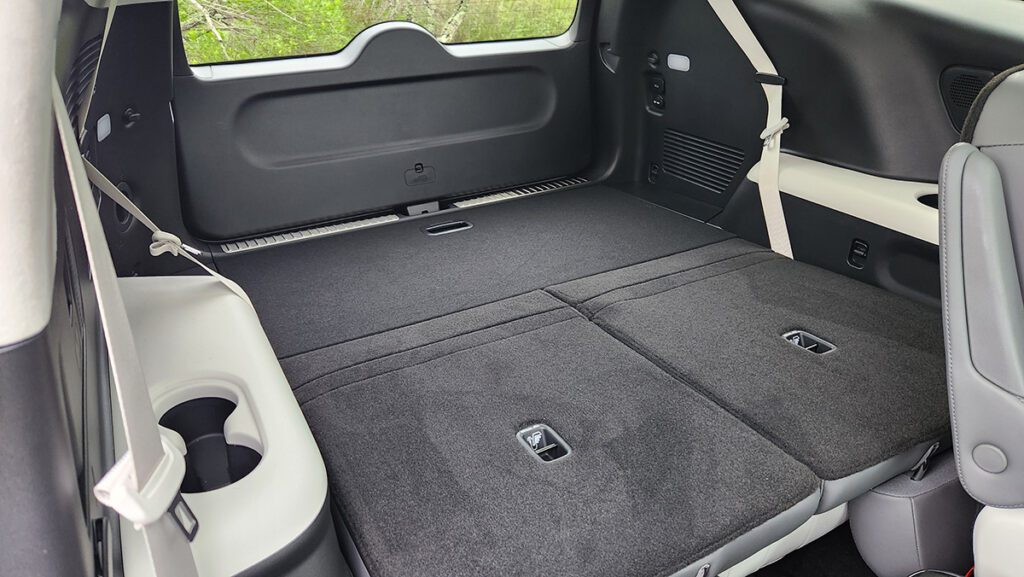
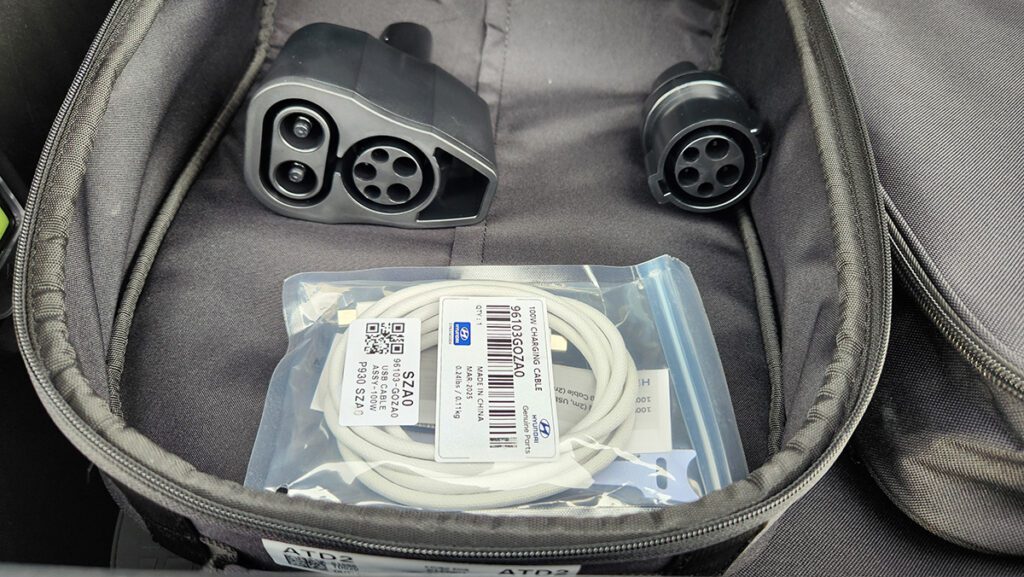
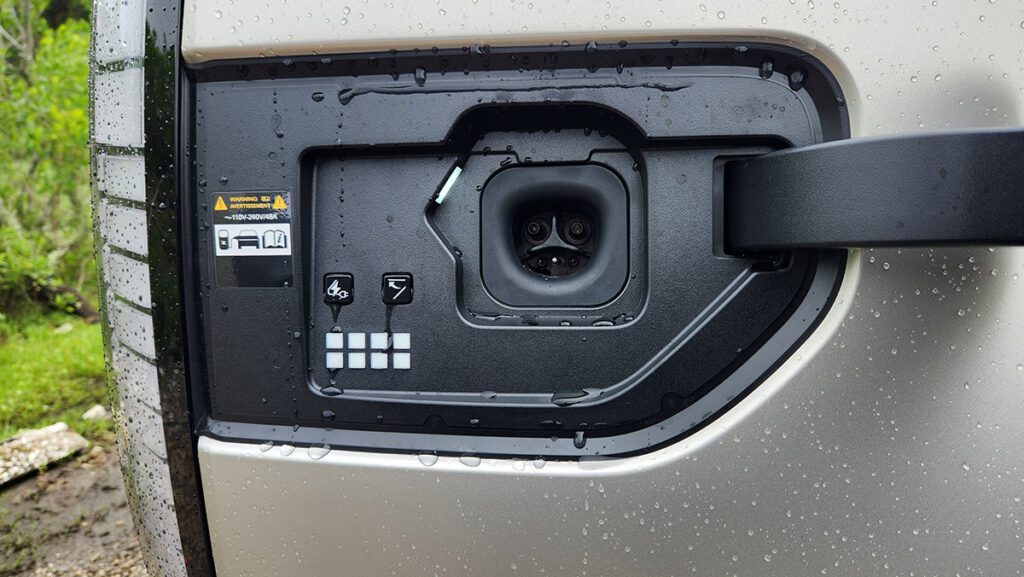
Images by John Voelcker
As for energy efficiency, over our test route of almost 100 miles, we logged roughly 2.7 miles/kWh. For a vehicle with a curb weight of 5,500 to 6,000 pounds that carries six or seven people, that’s respectable. But our results over a specific test route are not necessarily representative of what other drivers may get on different routes, at different average speeds, under different weather conditions.
Hyundai has been early to the game in offering Vehicle-to-Load (V2L) power-out capability in its EVs via 120-volt outlets in some trims. The Ioniq 9 is no exception, though they may find more use in family road trips than in smaller EVs more likely to be used in single-occupant commuting duty. The Limited and Calligraphy models of the big SUV have their power outlet in the cargo bay.
USB power charging, multifunction console
Hyundai has long been a master of finding the right balance of digital controls and hard buttons, with plenty of clever cabin storage to boot. The Ioniq 9 continues the tradition with the “Universal Island 2.0,” a storage bin under the front seat center armrest that slides, offers access from both the first and second rows, and has a sliding drawer for second-row users and a main lid that hinges from either the front or the rear. Net result: Most occupants can get access to convenient storage between the front seats. It’s a small thing, but it matters to family road-trippers.
The Ioniq 9 has seven USB-C ports, a few of which provide a whopping 100 Watts of power, enough to charge a laptop computer while in use. It’s so powerful, in fact, that Hyundai provides a specially rated cable to use with it. That sits in a small bag in the front trunk, along with the two adapters needed for charging on the vehicle’s NACS port.
Ioniq 9 prices ranges from $60,555 for the rear-wheel-drive S version, which is likely to be scarce on dealer lots, up to $78,090 for the top-trim Performance Calligraphy Design AWD model. That makes it an $80,000 Hyundai, putting it up against the bottom of the Rivian R1S range, for instance. All Ioniq 9 prices quoted include a mandatory $1,600 delivery charge.
Hyundai provided airfare, lodging, and meals to enable Charged to bring you this first-person drive report.

